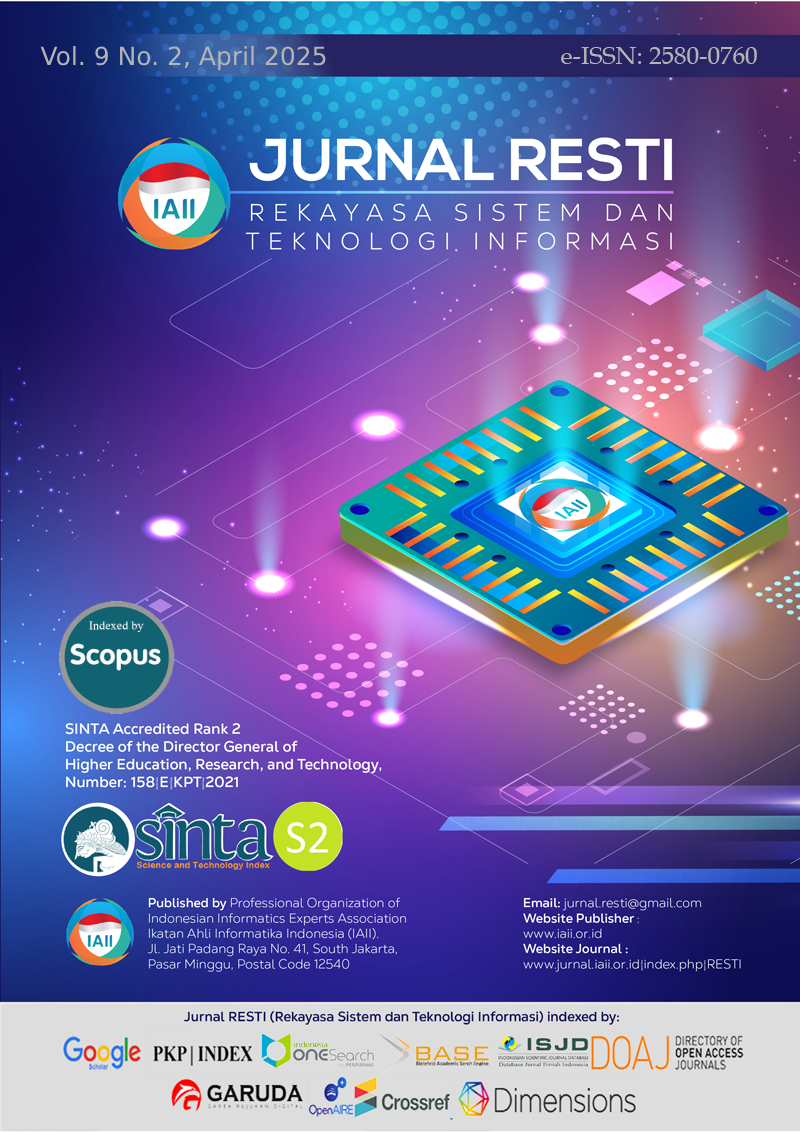Deep learning with Bayesian Hyperparameter Optimization for Precise Electrocardiogram Signals Delineation
Abstract
Electrocardiography (ECG) serves as an essential risk-stratification tool to observe further treatment for cardiac abnormalities. The cardiac abnormalities are indicated by the intervals and amplitude locations in the ECG waveform. ECG delineation plays a crucial role in identifying the critical points necessary for observing cardiac abnormalities based on the characteristics and features of the waveform. In this study, we propose a deep learning approach combined with Bayesian Hyperparameter Optimization (BHO) for hyperparameter tuning to delineate the ECG signal. BHO is an optimization method utilized to determine the optimal values of an objective function. BHO allows for efficient and faster parameter search compared to conventional tuning methods, such as grid search. This method focuses on the most promising search areas in the parameter space, iteratively builds a probability model of the objective function, and then uses that model to select new points to test. The used hyperparameters of BHO contain learning rate, batch size, epoch, and total of long short-term memory layers. The study resulted in the development of 40 models, with the best model achieving a 99.285 accuracy, 94.5% sensitivity, 99.6% specificity, and 94.05% precision. The ECG delineation-based deep learning with BHO shows its excellence for localization and position of the onset, peak, and offset of ECG waveforms. The proposed model can be applied in medical applications for ECG delineation.
Downloads
References
R. Xiao et al., “Monitoring significant ST changes through deep learning,” J. Electrocardiol., vol. 51, no. 6, pp. S78--S82, 2018.
A. E. Tondas, R. A. Halim, and M. Guyanto, “Minimal or No Touch Electrocardiography Recording and Remote Heart Rhythm Monitoring during COVID-19 Pandemic Era,” Indones. J. Cardiol., 2020, doi: 10.30701/ijc.1010.
W.-C. Liu et al., “A deep learning algorithm for detecting acute myocardial infarction,” EuroIntervention, vol. 17, no. 9, pp. 765–773, 2021.
D. E. Jonas, L. C. Kahwati, J. D. Y. Yun, J. Cook Middleton, M. Coker-Schwimmer, and G. N. Asher, “Screening for atrial fibrillation with electrocardiography: Evidence report and systematic review for the US preventive services task force,” JAMA - J. Am. Med. Assoc., vol. 320, no. 5, pp. 485–498, 2018, doi: 10.1001/jama.2018.4190.
G. Jimenez-Perez, A. Alcaine, and O. Camara, “U-Net Architecture for the Automatic Detection and Delineation of the Electrocardiogram,” Comput. Cardiol. (2010)., vol. 2019-Septe, Sep. 2019, doi: 10.23919/CINC49843.2019.9005824.
S. Nurmaini et al., “Robust electrocardiogram delineation model for automatic morphological abnormality interpretation,” Sci. Rep., vol. 13, no. 1, p. 13736, 2023.
X. Wang, Y. Jin, S. Schmitt, and M. Olhofer, “Recent advances in Bayesian optimization,” ACM Comput. Surv., vol. 55, no. 13s, pp. 1–36, 2023.
S. Nurmaini et al., “Informatics in Medicine Unlocked Electrocardiogram signal classification for automated delineation using bidirectional long short-term memory,” Informatics Med. Unlocked, vol. 22, p. 100507, 2021, doi: 10.1016/j.imu.2020.100507.
S. Nurmaini et al., “Deep Learning-Based Stacked Denoising and Autoencoder for ECG Heartbeat Classification,” Electronics, vol. 9, no. 1, p. 135, 2020, doi: 10.3390/electronics9010135.
G. Sannino and G. De Pietro, “A deep learning approach for ECG-based heartbeat classification for arrhythmia detection,” Futur. Gener. Comput. Syst., vol. 86, pp. 446–455, 2018, doi: 10.1016/j.future.2018.03.057.
A. L. Goldberger, Z. D. Goldberger, and A. Shvilkin, Goldberger’s Clinical Electrocardiography: A Simplified Approach: Ninth Edition. 2017.
S. W. Smith et al., “A deep neural network for 12-lead electrocardiogram interpretation outperforms a conventional algorithm, and its physician overread, in the diagnosis of atrial fibrillation,” IJC Hear. Vasc., vol. 25, p. 100423, 2019, doi: 10.1016/j.ijcha.2019.100423.
V. V Kuznetsov, V. A. Moskalenko, D. V Gribanov, and N. Y. Zolotykh, “Interpretable feature generation in ECG using a variational autoencoder,” Front. Genet., vol. 12, p. 638191, 2021.
M. G. Khan, Rapid ECG interpretation. Springer Science & Business Media, 2008.
L. Wu et al., “Lasso regression-based diagnosis of acute st-segment elevation myocardial infarction (stemi) on electrocardiogram (ecg),” J. Clin. Med., vol. 11, no. 18, p. 5408, 2022.
B. J. Kenny and K. N. Brown, “ECG T Wave,” 2019.
S. Mawri et al., “The comparison of physician to computer interpreted electrocardiograms on ST-elevation myocardial infarction door-to-balloon times,” Crit. Pathw. Cardiol., vol. 15, no. 1, pp. 22–25, 2016.
Y. LeCun, Y. Bengio, and G. Hinton, “Deep learning,” Nat. Methods, vol. 13, no. 1, p. 35, 2015, doi: 10.1038/nmeth.3707.
J. Wu, X.-Y. Chen, H. Zhang, L.-D. Xiong, H. Lei, and S.-H. Deng, “Hyperparameter optimization for machine learning models based on Bayesian optimization,” J. Electron. Sci. Technol., vol. 17, no. 1, pp. 26–40, 2019.
A. Javeed, S. Zhou, L. Yongjian, I. Qasim, A. Noor, and R. Nour, “An Intelligent Learning System Based on Random Search Algorithm and Optimized Random Forest Model for Improved Heart Disease Detection,” IEEE Access, vol. 7, 2019, doi: 10.1109/ACCESS.2019.2952107.
W. Liu and J. Wang, “Recursive elimination–election algorithms for wrapper feature selection,” Appl. Soft Comput., vol. 113, 2021, doi: 10.1016/j.asoc.2021.107956.
R. Garnett, Bayesian optimization. Cambridge University Press, 2023.
A. H. Victoria and G. Maragatham, “Automatic tuning of hyperparameters using Bayesian optimization,” Evol. Syst., vol. 12, pp. 217–223, 2021.
J. Snoek, H. Larochelle, and R. P. Adams, “Practical bayesian optimization of machine learning algorithms,” Adv. Neural Inf. Process. Syst., vol. 25, 2012.
A. I. Kalyakulina et al., “Ludb: a new open-access validation tool for electrocardiogram delineation algorithms,” IEEE Access, vol. 8, pp. 186181–186190, 2020.
H. Khorrami and M. Moavenian, “A comparative study of DWT, CWT and DCT transformations in ECG arrhythmias classification,” Expert Syst. Appl., vol. 37, no. 8, pp. 5751–5757, 2010.
K. Daqrouq, “ECG baseline wandering reduction using discrete wavelet transform,” Asian J. Inf. Technol., vol. 4, no. 11, pp. 989–995, 2005.
W. Jenkal, R. Latif, A. Toumanari, A. Dliou, O. El B’charri, and F. M. R. Maoulainine, “An efficient algorithm of ECG signal denoising using the adaptive dual threshold filter and the discrete wavelet transform,” Biocybern. Biomed. Eng., vol. 36, no. 3, pp. 499–508, 2016.
M. M. Suhail and T. A. Razak, “Cardiac disease detection from ECG signal using discrete wavelet transform with machine learning method,” Diabetes Res. Clin. Pract., vol. 187, p. 109852, 2022.
M. Aqil, A. Jbari, and A. Bourouhou, “ECG Signal Denoising by Discrete Wavelet Transform.,” Int. J. Online Eng., vol. 13, no. 9, 2017, doi: 10.3991/ijoe.v13i09.7159.
H. Alibrahim and S. A. Ludwig, “Hyperparameter optimization: Comparing genetic algorithm against grid search and bayesian optimization,” in 2021 IEEE Congress on Evolutionary Computation (CEC), 2021, pp. 1551–1559.
J. Wang, J. Xu, and X. Wang, “Combination of hyperband and Bayesian optimization for hyperparameter optimization in deep learning,” arXiv Prepr. arXiv1801.01596, 2018.
Copyright (c) 2025 Jurnal RESTI (Rekayasa Sistem dan Teknologi Informasi)

This work is licensed under a Creative Commons Attribution 4.0 International License.
Copyright in each article belongs to the author
- The author acknowledges that the RESTI Journal (System Engineering and Information Technology) is the first publisher to publish with a license Creative Commons Attribution 4.0 International License.
- Authors can enter writing separately, arrange the non-exclusive distribution of manuscripts that have been published in this journal into other versions (eg sent to the author's institutional repository, publication in a book, etc.), by acknowledging that the manuscript has been published for the first time in the RESTI (Rekayasa Sistem dan Teknologi Informasi) journal ;







